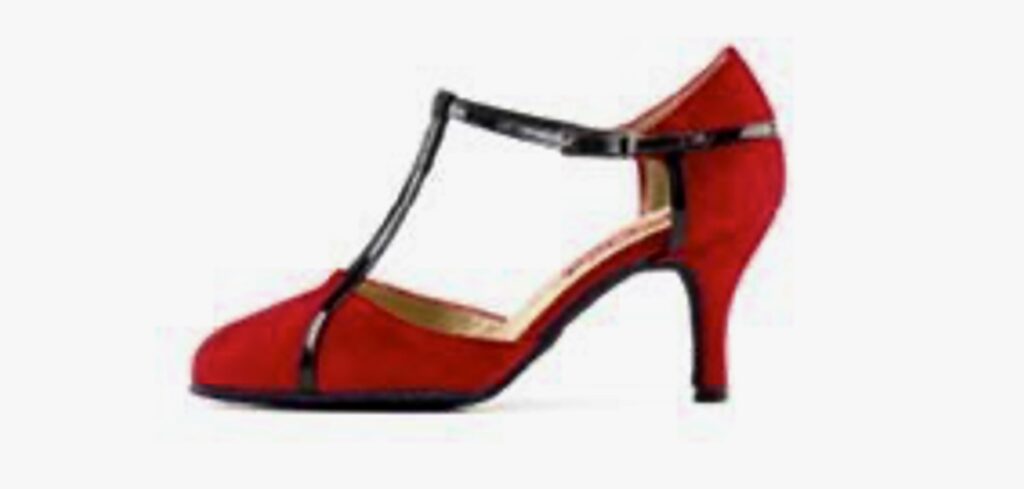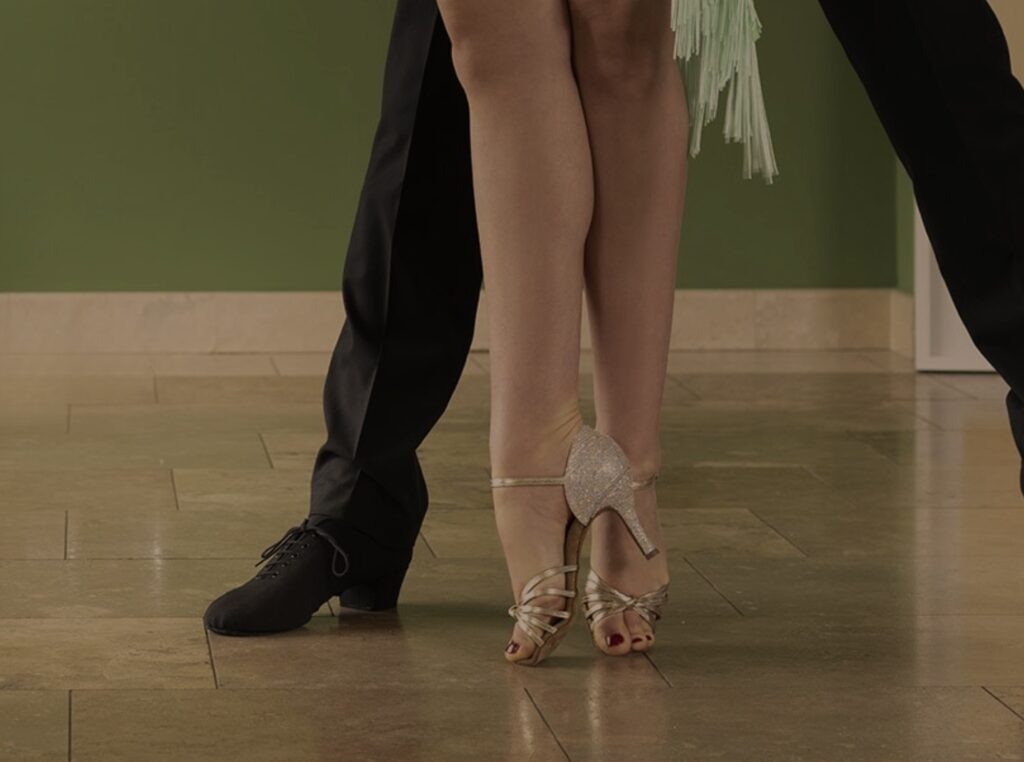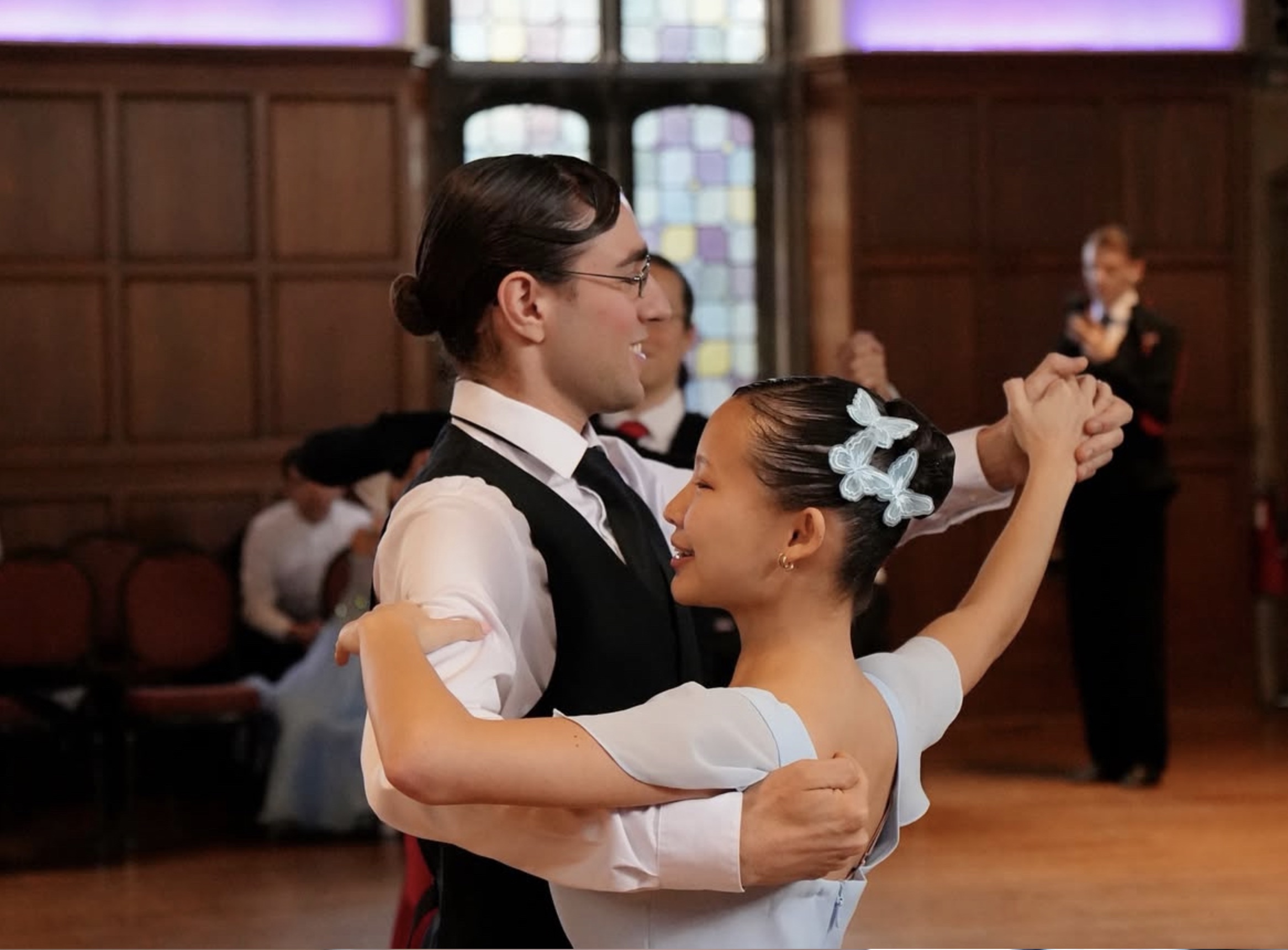I was recently at a Ballroom Competition. I’ve been to a lot of them lately, so no names here and no call outs.
I was watching the floor intently when a lovely tall couple took their place. There they were: elegant dancers, smiles, beautiful frame, perfect hair and makeup, gorgeous dress and tail suit, and EEEEEK! Stop the presses. Underneath the $7000 gown, $2000 tail suit, $120 hair, and $120 makeup – not to mention the thousands of dollars-worth of coaching and lessons that this couple obviously had gone through — were DIRTY SHOES!
I understand that dancers want to break in their shoes, but when they start looking grey, it is time to clean them, paint them, stone them, or replace them. Of course, it is not so easy to replace a pair of shoes. Good dance shoes are expensive. Plus, you might have to special order your size and sometimes they must be shipped all the way from Europe. This takes planning, coordination, a few prayers, and time.
Then there is the task of breaking them in. I know dancers who take them out of the box, slip them on, and start dancing. WOW! Most of us have done that in a pinch, but it can be a little tough on the tootsies, especially if there is nothing (stockings, fishnets, socks, etc.) between your valuable pedes and the shoes. For most, this is not the way to go. Plus, there is nothing like dancing on blisters or wiping out on a brand-new edge.
So why dirty shoes? And in the case of the elegant couple described above…dirty once-white shoes? (That is the only clue I am giving.) Some people just do not know how to take care of their expensive footwear. So, I went to the experts at Paoul Dance Shoes. Here are the instructions from their website:
You recently purchased a pair of dance shoes and have started to wear them. Your new shoes are accompanying you in the gym or on the dance floor every day.
We know you want to maintain them as beautiful and comfortable as they are now. For this reason, we would like to give you some simple suggestions to preserve them in the best way.
→After wearing them, air out your shoes for a few hours. In this way, you can remove moisture without drying them out. Once they are dry, you can place your shoes in the cloth or satin bag provided in the shoe package when you bought them.
→After wearing them, do not leave your shoes in a dump environment or in a too-cold or too-warm location – for instance, do not leave your footwear in the car, during the summer or wintertime.
→Do not dry your shoes using heat sources such as a hair dryer, stove, or radiator (high temperatures are likely to dry out the materials).
→Do not wash your dance shoes in the washing machine for any reason!
Here are some suggestions to clean your shoes, considering the construction materials.
Leather shoes
 Remove dirt with a soft cloth or a brush with soft bristles.
Remove dirt with a soft cloth or a brush with soft bristles.
Apply the shoe polish cream with circular motions, starting from the edges and then wiping all around the shoe surface.
Then, use a brush to polish the shoes and let the cream dry completely.
For shoes made of silver/gold kid, use a specific polish cream, which matches with these colors.
Suede shoes
 As this material tends to trap dust due to its natural porosity, to maintain suede shoes, Paoul suggests using the proper brush made of either natural rubber or brass.
As this material tends to trap dust due to its natural porosity, to maintain suede shoes, Paoul suggests using the proper brush made of either natural rubber or brass.
You can revive their color using specific sprays.
Patent shoes (or with patent details)
 Firstly, remove dust from the shoes with a dry cloth.
Firstly, remove dust from the shoes with a dry cloth.
Secondly, dip a cotton cloth into a specific neutral and hydrating cream and use it to restore their shine.
Do not use brushes for suede or leather: they could damage your shoes.
Satin or cloth shoes
 Use water and neutral soap.
Use water and neutral soap.
Start from the less visible areas and carry on to the upper.
Please note: If the satin of your footwear is damaged or it is not possible to clean this material and make it look as it was originally, we suggest using these shoes for training and choosing another pair for competitions or performances. Alternatively, you can request to dye satin in a darker color (for instance black or blue), with Dylon colors.
Once again, please do not wash your shoes in the washing machine, for any reason.
If you follow these simple instructions, you will avoid damages and you will preserve your shoes in the best way.
Paoul also offers some information about shoe maintenance services, after several years of use. You might consider resoling, satin dyeing, changing of internal insole, and much more. These are services they specifically offer their customers; it would be best to consult your shoe’s maker to see what they might be able to do for you.
What does this come down to. Don’t be the beautiful dancer in DIRTY SHOES. Ballroom — that includes International Standard, American Smooth, International Latin, and American Rhythm — is part of a beautiful culture. How you look and present yourself are key to the performance.
Bottom Line: This is the sport where people watch and judge everything, especially your feet! Beautiful shoes make beautiful feet!
 It’s two weeks until USA Dance National Championships, March 22-24 in Pittsburgh, Pennsylvania. Registration closes March 8. Did you break in your new shoes? And always bring a second pair down to the dance floor.
It’s two weeks until USA Dance National Championships, March 22-24 in Pittsburgh, Pennsylvania. Registration closes March 8. Did you break in your new shoes? And always bring a second pair down to the dance floor.






















